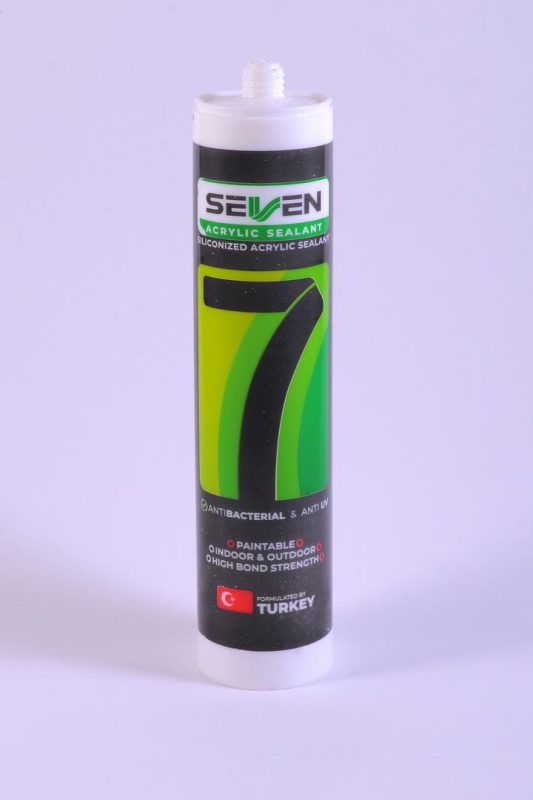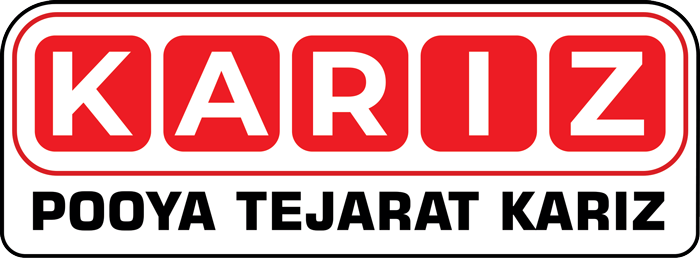Types of Sealants and Their Applications
Sealant pastes are used for insulating various surfaces. These products are utilized in different industries according to the required application, such as sealing, caulking, and waterproofing. Nowadays, sealing and waterproofing methods are used to fill joints and gaps between tiles, doors, windows, etc., to increase resistance against water intrusion. This process is particularly important in wet areas of buildings, such as bathrooms, where waterproofing poses a significant challenge, but it is less difficult in other areas of the building, like hallways, which do not deal with moisture.

Waterproofing agents and sealants bond different components and materials to the main structure of the building. These materials fill the gaps between parts and surfaces, preventing fluids and other substances from passing through the surfaces into the joints.
Waterproofing agents and sealants perform the following essential functions in the construction industry:
- Fill the gaps between various components.
- Create an impermeable protective barrier to prevent materials from passing through.
- Maintain their waterproofing properties throughout their expected lifespan under the specified usage and environmental conditions.

Another important requirement for waterproofing agents and sealants is high flexibility to withstand movements between different materials. These movements can occur due to:
- Expansion and contraction from temperature changes
- Dimensional changes due to moisture content variations in materials
- Deformation from existing loads
- Wind and pressure
This movement of components is typically caused by the different thermal expansion coefficients of materials. Therefore, to achieve optimal performance and functions, it is essential to match the appropriate sealant with the substrate materials being bonded.
Types of Construction Waterproofing Agents
Waterproofing agents and sealants are generally classified as follows:
- Based on chemical structure, such as polyurethanes, polysulfides, epoxies, silicones, and acrylics.
- Based on elasticity, such as putty (which does not tolerate deformation), plastomeric waterproofing agents, and elastomeric waterproofing agents.
- Based on physical form, such as waterproofing agents packaged in cartridges that are extruded on-site, tape, ribbons, or hot melt sealants.
This article will explain the classification based on chemical structure and provide a brief description of each.
Polyurethane Sealant Paste
One type of sealant paste is polyurethane paste, which is the most commonly used type of this product, manufactured as a single component. This type of paste or mastic is based on polyurethane resins and is recognized as the strongest type of sealant due to the addition of other additives. It is used for sealing in high-traffic areas and is particularly suitable for expansion joints. This sealant has high resistance to UV rays, is durable, and dries quickly. It also has anti-fungal and anti-algal properties.

Polysulfide Sealant Paste
Polysulfide sealant paste is another type of this product based on polysulfide resins and is produced as a two-component system. When purchasing this type of sealant, it is important to note that it is available in both liquid and paste forms. The liquid type is used for horizontal surfaces, while the paste type is injected for vertical surfaces. Polysulfide sealant has very high adhesive properties, making it suitable for various surfaces, including concrete, metal, stone, and wood.

Epoxy Sealant Pastes
Epoxy sealant pastes are based on epoxy resins and combined with other additives, making them suitable for expansion joints due to their exceptional adhesive properties. A unique feature of this type of paste is its color variety, making it suitable for work in facades and building joints.

Silicone Sealant
Silicone sealant is a water-based and acrylic paste that is less expensive than other sealants. This type of sealant has very high adhesive properties and can be used on various surfaces, including metal, glass, aluminum, wood, PVC, concrete, stone, and more. Its primary application is sealing aluminum and UPVC windows. Super silicone is a 100% silicone adhesive without acrylic compounds, although some models contain antibacterial additives and strengthening agents. Unlike other similar products, silicone cures when in contact with water, whereas water-based adhesives cure through drying.
A disadvantage of pure silicone is that it cannot be painted; however, since its use is limited to areas of the building that do not require painting, this drawback can be overlooked. This product is often used for sealing around kitchen sinks and even for bonding the sink to the countertop.
Previously, pure silicone adhesive was only available as a white or clear material on the market, but it is now produced in other colors, such as black and almond. This material should be cleaned with a solvent such as mineral spirits or isopropyl alcohol. During the curing process of this adhesive, an unpleasant odor similar to vinegar may be present, but this odor dissipates completely within a few days.

Acrylic Sealant
This product is paintable and is introduced as a suitable product for indoor and outdoor environments. However, its use in outdoor settings is generally not recommended, as better and more durable adhesives are available for outdoor use. This product is typically used indoors for sealing and waterproofing joints in windows, painted woodwork, gaps between tiles and walls, and other relatively dry areas. However, it is not suitable for bonding tile to tile since its durability is not as high as pure silicone, and the gaps between tiles are usually areas that do not require painting.
There are two types of acrylic waterproofing agents:
- Water-based (emulsion-based)
- Solvent-based

How to Use Different Sealant Pastes
- For using mastic and sealant pastes, ensure that the surface is completely clean and free from any contaminants. Dirt can negatively impact the quality and adhesive properties of the sealant. Therefore, the substrate must be free from loose and sticky particles.
- Another consideration before applying the sealant paste is the temperature of the application site. The temperature should not be too high or too low, and environmental conditions should be normal.
- Sealant pastes are used according to their type. Some are applied by injection, while others are applied by spreading. Therefore, be sure to pay attention to the application method before purchasing this product.
- After using the caulking and sealing paste, allow it to dry completely. The drying time depends on the type of paste, the thickness of the application, and the temperature of the environment. It is essential to note that the thickness of the sealant on the gap should be about 5 mm.
- After completing the sealing and caulking process with the paste, any excess material should be cleaned using a tool like a spatula or a cloth, as most pastes adhere to surfaces after drying, making them difficult to clean.
Sealants have a wide range of properties regarding resistance, flexibility, durability, solubility, corrosion resistance, etc. Given the extensive variety of this category of adhesives, be sure to consult with specialists at Pouya Tejarat Kariz before purchasing, so you can select the best sealant based on the type of surfaces and your specific application conditions.














